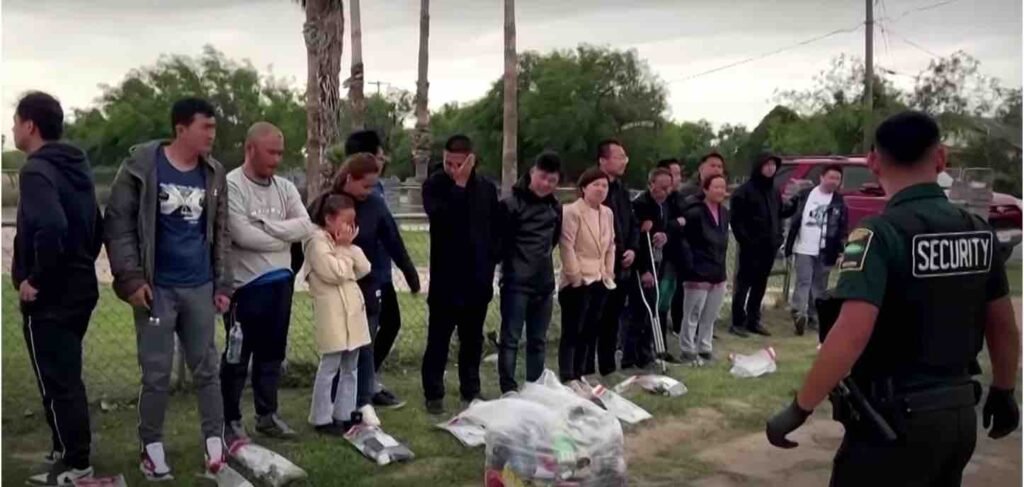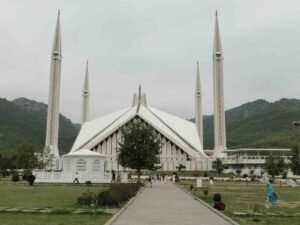Surging Chinese Asylum Seekers in US: Understanding the Causes and Implications

By Lucas Smith
The migration of Chinese nationals into the United States has seen a significant surge in recent years, particularly through illegal channels across the southern border. This article aims to analyze the reasons behind this phenomenon, the implications it holds, and the sudden increase observed in the past two years.
Migration data speaks the magnitude of this issue. In 2021 only 450 Chinese nationals were caught illegally crossing the southern border of the US, but that figure shot up to more than 2,000 in 2022 and 37,000 in 2023, according to US Customs and Border Patrol. Nationwide encounters of Chinese migrants similarly soared in recent years, hitting 52,700 in 2023, nearly double the year prior. In 2024, this figure would be crossed in the next few months, indicating the alarming nature of the issue. All these migrants have applied for asylum in the US, claiming persecution in China.
The influx of Chinese migrants into the United States is noteworthy not only due to its magnitude but also its contrast with historical migration trends. While Chinese immigration to the US has a long and complex history, the current wave is distinct. Unlike the laborers of the 19th century or the skilled professionals of later decades, today’s migrants often come from the middle class, driven by economic, social, and political factors prevailing in China now.
Drivers of the Recent Chinese Migration
The economic slowdown in China serves as a primary driver for migration. As China grapples with economic challenges, including a slowdown in growth and structural shifts in industries like real estate, individuals find themselves seeking opportunities abroad. The collapse of China’s real estate sector, as witnessed by many migrants, pushes middle-aged professionals to seek refuge in the US, where they hope for better prospects to sustain their families.
Beyond economic motives, social and political factors also play a significant role. Dissatisfaction with the Chinese government’s policies, restrictions on freedoms, and concerns about the future under authoritarian rule has driven many Chinese nationals to seek asylum or migrate illegally. The desire for religious freedom, as expressed by some migrants, reflects a broader discontent with the political climate in China.
The COVID-19 pandemic has exacerbated existing challenges in legal immigration processes. Lengthy delays in visa processing, coupled with uncertainties surrounding travel restrictions, push migrants towards illegal means of entry. The allure of a well-organized underground network, facilitated by social media, provides an alternative route for those unable to navigate the bureaucratic hurdles of legal immigration.
The geopolitical rivalry between the United States and China adds complexity to the migration dynamics. As the two nations vie for global influence, the migration of Chinese nationals into the US takes on strategic significance. Speculations about potential espionage activities or covert operations by the Chinese government raise concerns about national security, prompting heightened scrutiny and response from US authorities. The Belt and Road initiative, China’s expanding global influence, and concerns about Chinese investments in critical sectors further exacerbate tensions and shape perceptions of migration as a strategic challenge.
Pathways of Migration
The journey of Chinese illegal migrants into the United States encompasses a diverse array of routes, reflecting the complex dynamics driving their migration. One of the primary routes involves a perilous journey through Central America, often starting in countries like Ecuador or Panama. Ecuador is a popular route as it is visa free for Chinese nationals. From Ecuador, the migrants move towards Mexico with the help of traffickers locally called “snake heads”.
Migrants traverse dense rainforests and treacherous terrain, facing risks of robbery, exploitation by smugglers, and encounters with local authorities. The infamous Darién Gap, a remote and inhospitable jungle region separating Panama and Colombia, serves as a gateway for many, despite its challenging conditions and lack of infrastructure. Additionally, some migrants opt for more indirect routes, leveraging transit countries and exploiting gaps in border enforcement to reach the US-Mexico border. These routes may involve multiple stages, from air travel to land crossings, coordinated with the assistance of smugglers or underground networks. The allure of social media and online platforms further facilitates the coordination and dissemination of information about routes and methods of entry.
The Price of Migration
The journey from China to the United States can be expensive for migrants, often requiring significant financial investment. Many migrants spend large sums of money to cover expenses such as transportation, accommodation, and payments to smugglers or facilitators. For instance, some migrants reported paying up to $5,000 or more to smugglers for an “all-inclusive service” to guide them across borders and provide assistance along the way. Additionally, the costs associated with travel through multiple countries, including visa fees, transportation fares, and bribes, further add to the financial burden.
Despite the challenges of arduous routes and high costs, the common thread remains the pursuit of economic opportunity, freedom, and a better life, driving Chinese migrants to undertake these difficult journeys in pursuit of a better future for themselves and their families in the United States.
The illegal migration of Chinese nationals into the United States represents a multifaceted phenomenon driven by economic, social, and geopolitical factors. The recent surge in migration underscores the complex interplay of global dynamics and domestic challenges. As policymakers grapple with the implications of this trend, addressing the root causes while upholding security and humanitarian considerations will be paramount. By understanding the motivations behind migration and the broader context shaping these movements, stakeholders can develop more effective strategies to manage and mitigate the challenges posed by irregular migration.
Lucas Smith is an anthropologist based in New York City.
Note: The contents of the article are of sole responsibility of the author. Afghan Diaspora Network will not be responsible for any inaccurate or incorrect statement in the articles.










